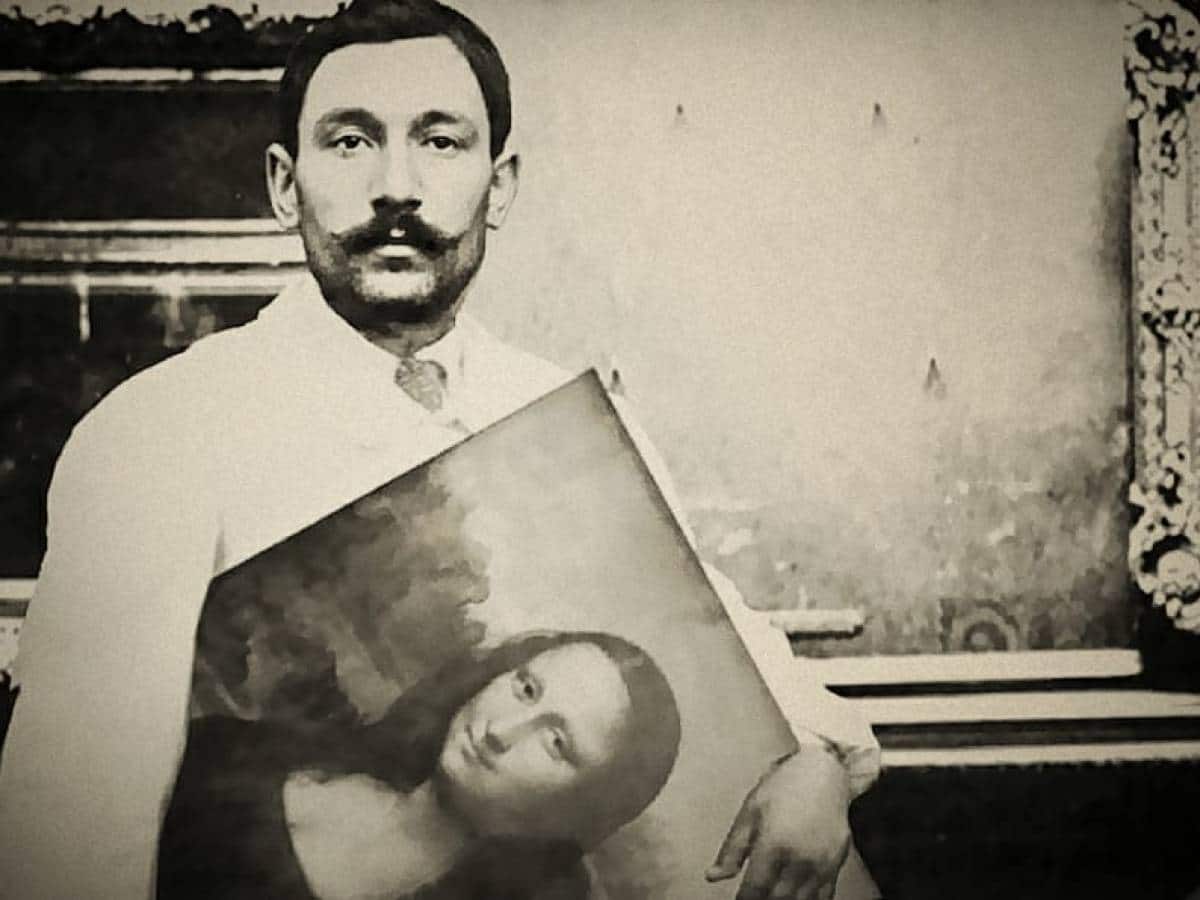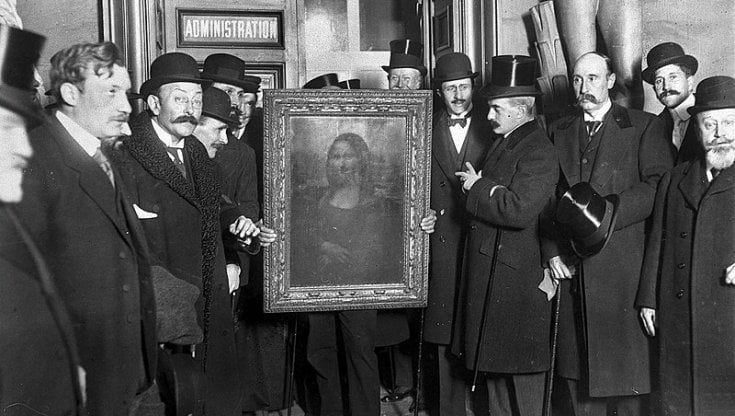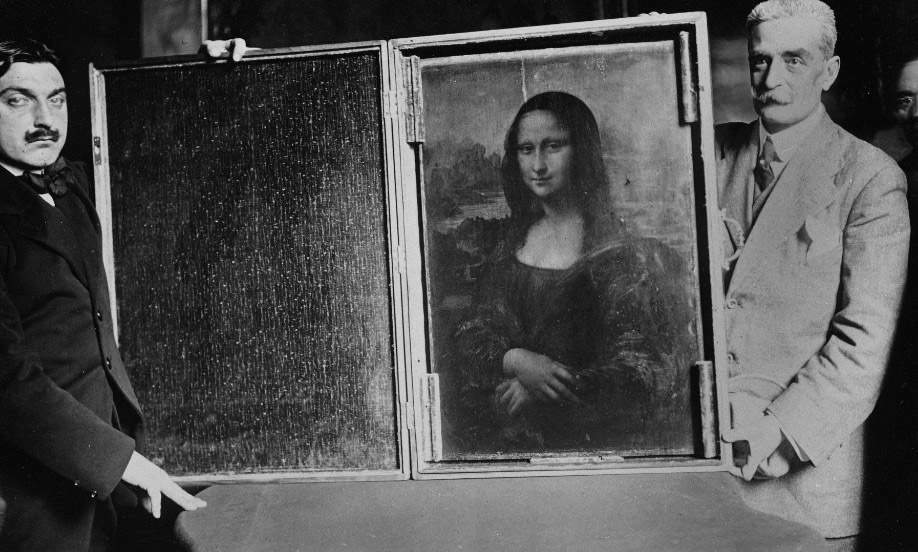
The theft of the Mona Lisa from the Louvre on August 21, 1911 has gone down in history as one of the most incredible and ingenious coups in the art world. The protagonist in this affair was Vincenzo Peruggia, an Italian decorator and glazier who had worked at the Louvre Museum and was familiar with the halls, paths, and interiors.
STORY OF THE THEFT OF THE GIOCONDA

The story of the theft of the Mona Lisa is unbelievable and rousing, showing how vulnerable even great museums are and how necessary it is to spread a culture of beauty and protection of the world’s artistic heritage.
THE THEFT OF THE MONA LISA
On the morning of the theft, Peruggia, wearing a museum work uniform, hid in a room until the museum opened. Taking advantage of the confusion and the presence of a small number of security guards, he made his way to the room where the Mona Lisa was on display, detached it from the wall, and hid it under a work coat.
The painting was taken out of its frame, which Peruggia abandoned in a back staircase.
The disappearance of one of Leonardo da Vinci’s masterpieces was not noticed until the following day, as it was thought that the painting had been taken away to be photographed. Once the theft was discovered, the Louvre was closed for a week for investigation, and the news quickly went around the world, causing astonishment and outrage.
Peruggia managed to bring Leonardo’s Mona Lisa to Italy, hidden in a suitcase, with the intention of returning it to Italy, believing that the work had been stolen during the Napoleonic campaigns, not knowing that in fact Leonardo had brought it to France of his own free will during the last years of his life.
THE FINDING OF THE MONA LISA
The turning point came only two years later, in 1913, when Peruggia contacted Alfredo Geri, an art dealer in Florence, claiming that he was in possession of the Mona Lisa and wanted to return it to Italy and wanted a reward for bringing it “home.”
Geri, together with the director of the Uffizi Gallery in Florence, arranged a meeting with Peruggia to authenticate the painting. Once the authenticity was confirmed, the Italian authorities were informed and Peruggia was arrested.
Since the discovery of the Mona Lisa, Leonardo da Vinci’s work has attracted even more interest and curiosity, becoming the art icon we know today.
One of the lesser-known but no less fascinating aspects is related to a tour of the painting in Italy before it was returned to France. During this brief period, the Mona Lisa was exhibited in several Italian cities, including Florence, Rome, and Milan, receiving a triumphant reception.
In each city, immense crowds gathered to admire the recovered masterpiece, with events and celebrations attracting attention across the country. This tour not only strengthened the bond between Italy and Leonardo’s work, but also demonstrated how art can become a symbol of national pride, protection and appreciation of art. Moreover, the theft and subsequent discovery of the Mona Lisa greatly increased its worldwide fame, turning it into one of the most well-known and admired paintings of all time.

The return of the Mona Lisa to Italy was an event celebrated with great enthusiasm; the painting was exhibited in several Italian cities before being returned to France in 1914, as determined by Italian authorities. Peruggia was tried in Italy and received a relatively light sentence, justified by his misinterpreted patriotism and lack of a criminal record. His action, although illegal, helped transform the Mona Lisa into the worldwide icon it is today, attracting global attention and generating unprecedented fascination for Leonardo da Vinci’s work.

